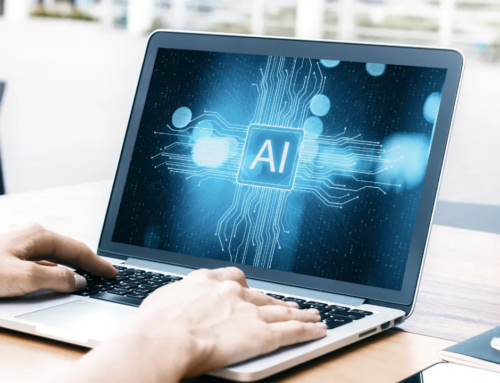The market for HR technology is always changing, especially software solutions and how they’re packaged by vendors. The lines between the terms used for different HR software have become increasingly blurry. Perhaps the two terms that are most often confused are human resource information system (HRIS) and human capital management (HCM).
It’s common for people to confuse these types of software because they overlap in terms of their functionalities. However, these solutions have historically differed in terms of their scopes. Whereas an HRIS typically only deals with core HR responsibilities, an HCM system offers everything an HRIS does, along with features for talent management and advanced analytics.
You’ll likely come across these terms when researching tools to digitize HR. Having clarity on HCM vs. HRIS will help you select a suitable solution that fits your needs.
HRIS: A Platform to Streamline Core HR
An HRIS is a solution that primarily serves as a central database for your HR and employee information. That’s the very definition of an information system — a platform that collects and distributes data. Examples of the data stored in an HRIS include personal identification, professional, and tax information of employees. It also includes key documentation that describes the HR processes of an organization, such as recruitment, personnel tracking, and benefits administration.
Modern HRISs also offer functionalities built around that static data, allowing organizations to manage and streamline core HR functions. A typical HRIS software will include features for the following:
- Recruitment: Grants the ability to share open jobs and manage resumes of candidates in a centralized location. More advanced platforms offer robust applicant tracking systems (ATS), which allow recruiters to filter job candidates based on certain attributes and manage their journeys.
- Time and Attendance Tracking: Tracks when your employees clock in and clock out and deals with absences in a streamlined way.
- Benefits Administration: Allows employees to digitally enroll in insurance programs, request reimbursement for eligible costs, and look at their 401(k) plans, among other things.
- Learning Management: Facilitates and tracks the training of your employees through a central tool.
- Payroll Processing: Calculates the net pay of your employees and creates paychecks.
The specific features you get with your HRIS will differ from vendor to vendor. Some platforms may not offer all of the functionalities listed above, whereas a few may include additional ones.
HCM: An End-to-End HR Solution
A human capital management (HCM) system is a robust platform that allows you to manage, automate, and streamline almost every HR function. HCM software encompasses everything you’d expect to get from an HRIS and combines it with additional functionalities that allow you to track, manage, and optimize the talent of your organization.
The main difference between an HRIS and HCM solution is the comprehensive nature of the latter. In addition to features for managing employee data and streamlining core HR, an HCM suite also offers tools for:
- Onboarding: Offers new employees the support, tools, and information they need to get started with their roles in a streamlined way.
- Training and Development: Provides your employees with the training, support, and development they need to grow in their roles and benefit your organization.
- Workforce Planning: Allows you to monitor and forecast your workforce needs. The goal is to ensure that you have the right talent acquisition initiatives in place to sustain your business.
- Employee Performance Management: Helps ensure your employees are performing at optimal levels by monitoring KPIs and facilitating feedback.
- Compensation Management: Plans and administers employee compensation strategy from a central location.
- Employee Communications and Survey: Streamlines communication and feedback collection from employees across the organization.
- Analytics: Enables you to gather, process, and analyze employee data to make crucial business decisions.
HCM vs. HRIS: Pros and Cons
An HRIS and HCM both work toward the same goal of digital HR transformation. However, the extent of that transformation differs from solution to solution. Understand the key differences and then carefully consider the potential plus points and deal-breakers when choosing one for your business:
Standalone HRIS: A Good Option for Smaller Businesses
While an HRIS is essentially a watered-down version of an HCM, it certainly has its advantages. First of all, it offers all the prerequisites you need to streamline and digitize basic HR functions. It allows you to digitally store all crucial data pertaining to your employees and core areas of HR. You can also automate a handful of administrative functions. That means you can start your transition to a paperless environment while automating some manual tasks using workflows for your HR team.
A typical platform won’t require a large budget — at least not as much as you’d require for an end-to-end solution. An HRIS is therefore suitable for small businesses.
However, an HRIS is at a major disadvantage when it comes to its breadth as a solution. It essentially only helps streamline HR data, core processes, and documentation. There are no features that allow HR managers and other business leaders to track and optimize the performance of their workforce.
This lack of features can be problematic if and when a business begins to grow. An HRIS may not offer the scalability needed to keep up with the growing HR needs of the organization.
A Comprehensive HCM: A Full-Scale Platform for Large Businesses
An HCM supports a broader strategic initiative designed to improve the employee experience and maximize the economic value of your talent. An HRIS system, on the other hand, is only focused on supporting HR policies and day-to-day processes.
An HCM is an all-in-one solution for streamlining and digitizing your HR department. From workforce planning to compensation management, you can handle everything from a single solution. What’s more, a platform that offers seamless integrations with other external tools, such as business intelligence, accounting, and point-of-sale, will result in better connectivity and a unified tech stack. That way, you won’t need to worry about disjointed tools.
HCM systems also offer more scalability. A decent platform will grow with your business. You’re less likely to look for a new solution as you expand your teams and need a more streamlined way to manage your organization’s talent.
Naturally, more functionalities mean a higher cost. You’ll need to factor that in when researching potential vendors. A higher cost also means that you’ll need to make a very strong case for all the key decision-makers in your organization. The return on investment for your future HCM has to justify the cost. You’ll need to forecast your workforce needs and determine how your talent will change in the near future. This can be especially challenging if you’re short on time and have a limited budget to work with.
Which Solution Should You Pick?
Ask yourself: Is an HRIS sufficient to meet your digitization needs? Or is an HCM really what you’re looking for, given that you soon plan on scaling your team? Compare the pros and cons of both HR software solutions while considering your specific needs.
In the end, make sure that whatever solution you pick is fully integrated with your existing tech stack. If you’re still not sure what to do, feel free to contact us, and we’d be happy to talk it through.




